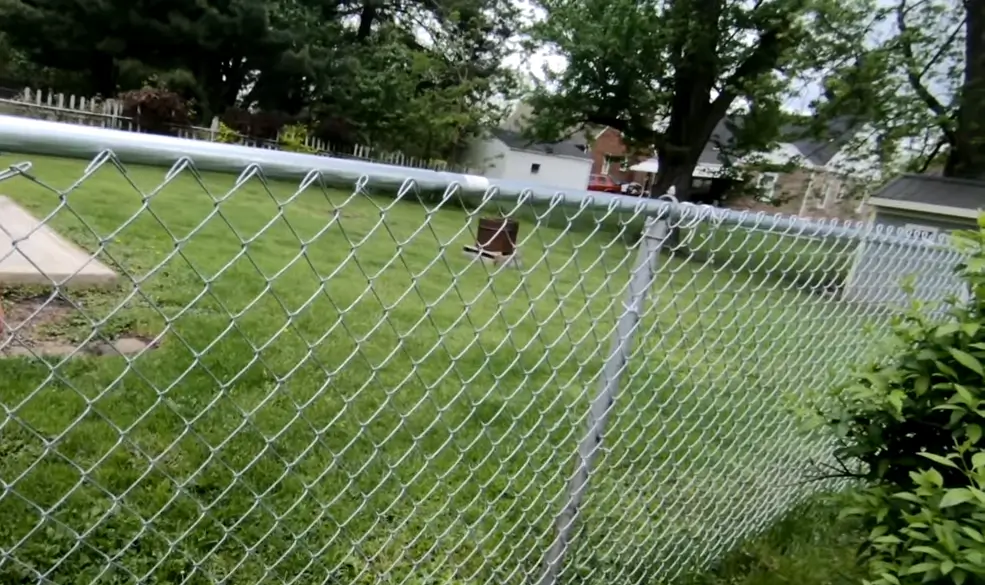Is A Top Rail Needed On A Chain Link Fence?
Do you have a chain link fence that’s looking a bit shaky or saggy? If you’re nodding your head, you might be wondering if something’s missing. That something could be a top rail. Many people ask, “Is a top rail needed on a chain link fence?” and it’s a great question!
A top rail is like the backbone of your fence. It keeps everything upright and in place. Without it, your fence might not be as strong or last as long. We know it might seem like just an extra part, but it’s actually pretty important.
In this post, we’re going to keep things simple and clear. We’ll chat about what a top rail is, why it might be a good idea for your fence, and how it helps. By the end, you’ll have all the info you need to decide if a top rail is right for your fence.
What is a top rail used for?

A top rail is like a long, sturdy pipe that sits on top of your chain link fence. It’s there to hold your fence up straight, just like your spine keeps you standing tall.
Without it, your fence might lean or sag, just like you would slouch without your spine.
It connects all the metal posts together and gives extra strength, so your fence can face strong winds or heavy rain without falling over.
What is the top of a chain link fence called?
The top of a chain link fence is typically called the ‘top rail area.’ This is where you find the top rail, a horizontal bar that runs along the length of the fence, providing essential support.
If there’s no top rail, you might see a ‘top tension wire’ instead. This wire, though not as strong as a top rail, helps maintain the fence’s shape and offers minimal support.
Does chain link need a bottom rail?
Does a chain link fence need a bottom rail? Well, it’s not always necessary, but it can be pretty helpful.
A bottom rail is like a partner to the top rail, sitting at the base of the fence. It adds extra stability and keeps the fence nicely in place. Especially if you have pets who like to dig or there’s uneven ground, a bottom rail can make sure your fence stays where it should, without any gaps at the bottom.
But here’s the thing: not every chain link fence has one. If your fence is more about marking a boundary or it’s in a pretty sheltered area, you might not need a bottom rail. It’s all about what your fence is up against and what you need it to do.
So, while a bottom rail is a great addition for extra strength and security, your fence can still do its job without one in many cases.
What is the gap between fence rails?
The gap between fence rails, especially in wooden fences, is key for privacy and stability. Typically, these gaps are balanced to keep your space private while allowing wind to pass through, preventing the fence from toppling over.
For chain link fences, it’s more about the space between the vertical posts, usually set 8 to 10 feet apart to ensure the fence is tight and sturdy. So, this gap is not just about looks; it’s crucial for a fence’s strength and functionality.
How many rails does a fence need?
The number of rails a fence needs depends on the type of fence and what it’s used for. Most traditional wooden fences have at least two rails: one near the top and one near the bottom. These rails provide the basic structure to attach the vertical boards or pickets.
However, if you have a taller fence for privacy or security, you might need a third rail in the middle to add extra stability and prevent the boards from warping or bending. For certain types of fences, like those meant for containing livestock, you might see even more rails to ensure the animals can’t push through or jump over.
In the case of chain link fences, it’s a bit different. They typically require just one horizontal rail at the top, and sometimes one at the bottom, with the chain link mesh attached to these rails and stretched tight between the vertical posts.
So, the number of rails your fence needs really depends on its height, purpose, and the material it’s made of. It’s all about making sure your fence is sturdy, functional, and fits the look you want for your property.
How To Install A Fence Without A Top Rail
Installing a chain link fence without a top rail is possible and can be a simpler, more cost-effective option for some situations. Here’s a basic guide on how to do it, but remember, while it might be cheaper and quicker, the fence won’t be as strong or durable as one with a top rail.
- Set the Posts: Start by digging holes for your fence posts, usually about 8 to 10 feet apart. The holes should be about three times the width of the post and deep enough to hold about one-third of the post’s length. Secure the posts in the holes with concrete and make sure they’re level and straight.
- Attach the Hardware: Once the posts are in and the concrete has set, attach the tension bands and caps to the posts. Tension bands are used to attach the chain link mesh to the posts, and caps are put on top of the posts for a finished look.
- Spread the Chain Link Mesh: Roll out the chain link mesh alongside your fence line. Attach one end to a terminal post (the main posts at either end of the fence line) using tension bands.
- Stretch the Mesh: Using a fence puller or a come-along tool, stretch the mesh tightly from one terminal post to the other. The mesh should be taut and even without any sagging.
- Attach the Mesh: Secure the mesh to the posts using the tension bands. For added security, you can also weave a tension wire through the bottom of the mesh and tighten it to keep the bottom of the fence firm.
- Finish Up: Once the mesh is secure, cut off any excess and tie off the ends. Make sure everything is tight and secure. Without a top rail, the top of the mesh might be a bit more flexible, so ensure it’s attached well to prevent sagging or gaps.
Remember, while a fence without a top rail can work for some situations, it won’t be as strong or secure as a traditional chain link fence. It’s best for temporary setups or areas where high security and durability aren’t a priority. Always check local building codes and regulations before starting your fence project to ensure you comply with all requirements.
Conclusion
In conclusion, when it comes to deciding whether you need a top rail for your chain link fence or if you’re considering installing one without it, it’s essential to weigh your specific needs against the benefits and drawbacks.
While omitting the top rail can save on costs and create a different aesthetic, the added stability, strength, and longevity a top rail provides are significant factors to consider.
Ultimately, the decision should be based on the purpose of your fence, the environmental conditions it will face, and your long-term expectations for its performance. No matter what you decide, ensuring your fence is properly installed and maintained is key to its effectiveness and durability.
So, take the time to plan, understand your needs, and choose the right setup for a fence that will serve you well for years to come.
Related Articles:

